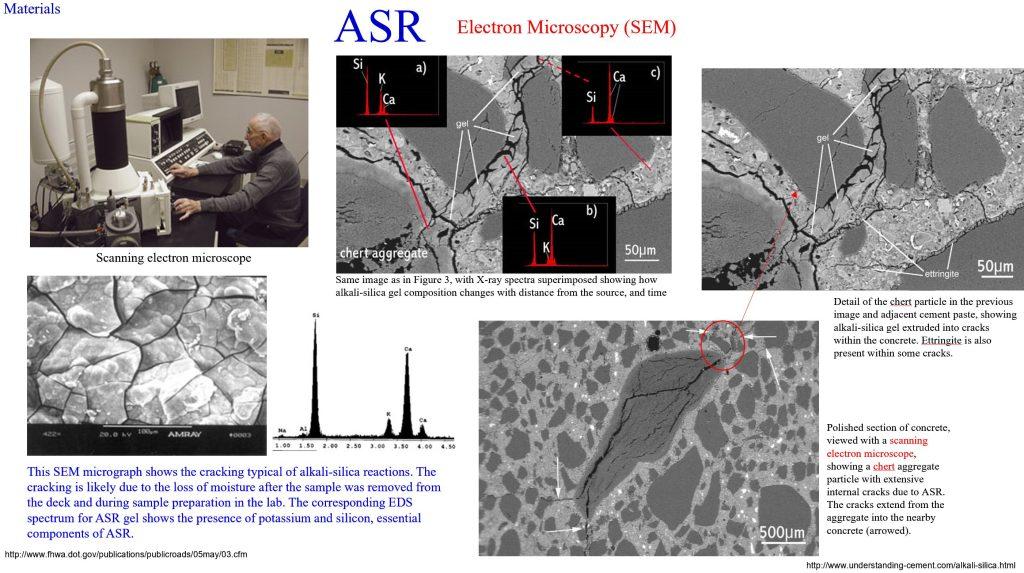Alkali-Silica Reaction
The alkali-silica reaction (ASR) is a chemical reaction that can occur in concrete structures, leading to potential durability issues. ASR is significant because it can compromise the long-term durability and structural integrity of concrete infrastructure, such as bridges, dams, and buildings. Addressing ASR requires a combination of preventive measures during construction and proactive management of existing ASR-affected structures.
Definition: ASR is a reaction between alkalis (such as sodium and potassium) from cement and reactive forms of silica (found in aggregates like sand, gravel, or crushed stone) in concrete.
Causes: ASR requires three main ingredients: alkalis from cement, reactive silica in aggregates, and sufficient moisture. When these conditions are met, the alkalis react with the reactive silica, forming a gel-like substance within the concrete.


Effects: The gel produced by the ASR can expand when exposed to moisture, leading to internal pressure within the concrete. Over time, this pressure can cause cracking, spalling, and degradation of the concrete structure.

Identification: ASR-induced cracks often have a distinct pattern, including map-like cracking (resembling a map with irregular polygonal shapes) or parallel cracks. These cracks typically occur in areas exposed to moisture, such as near joints or on surfaces subjected to water.
The best technique for the identification of ASR is the examination of concrete in thin section, using a petrographic microscope. Alternatively, polished sections of concrete can be examined by scanning electron microscopy (SEM). Chemical tests have also been shown to be effective.



Prevention and Mitigation:
- Using low-alkali cement reduces the amount of alkalis available for the reaction.
- Selecting non-reactive aggregates or using supplementary cementitious materials (such as fly ash or silica fume) can also mitigate ASR.
- Proper concrete mix design and curing practices help reduce the risk of ASR.
- Monitoring and maintenance, including sealing cracks and controlling moisture ingress, can help manage existing ASR-related issues.